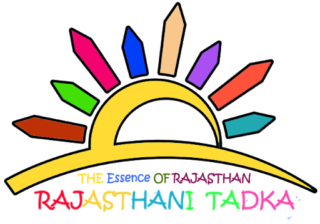 Today is an auspicious day for Jaipur as it’s the birth anniversary of Maharaja Sawai Jai Singh, the man who is behind the construction of Jaipur city. On this auspicious day, let us surprise you with some interesting facts about king Sawai Jai Singh his highness…
Today is an auspicious day for Jaipur as it’s the birth anniversary of Maharaja Sawai Jai Singh, the man who is behind the construction of Jaipur city. On this auspicious day, let us surprise you with some interesting facts about king Sawai Jai Singh his highness…
Maharaja veer Pratap Sawai Jai Singh founded Jaipur on 18 November in 1726, he was the ruler of Amer ( Amer is also known as Amber), the city of Jaipur has been named after him. His father was Raja Bishan Singh, he was the grandson of Raja Ram Singh 1 ruler of Amber, and head of the Kachwaha clan, from 1688 to 1699. Moreover, Jaipur is originally known as Jainagara (in Sanskrit, as the ‘city of victory’ and later as the ‘pink city’ by the British by the early 20th century), the planned city, later became the capital of the Indian state of Rajasthan. The emperor further bestowed him the titles of Raj Rajeshvar, Shri Rajadhiraj, and Maharaja Sawai.” Sawai” means one and a quarter times superior to his contemporaries, and this title was awarded to him due to his wits and intelligence.
Jaipur is known as the pink city because over two centuries ago in 1876, the Prince of Wales and Queen Victoria visited India on a tour. Since Pink denotes the color of hospitality, Maharaja Ram Singh of Jaipur painted the whole city pink in color to welcome the guests. On another hand, Mirza Raja Jai Singh 1 was a senior general of the Mughal empire and a ruler of Amber from 1614 to 1621 and died in the Battle of Ajmer.
Jaipur is the largest city of Rajasthan, Rajasthan was one of the historic states in India was founded in 1727 by Maharaj Jai Singh as we discussed above, still to today the name of Jaipur is connected with king Jai Singh his highness; Jai includes the name of Maharaja Jai Singh and Pur means City in Sanskrit language, Maharaj Jai Singh ruled Jaipur from 1699-1744. Initially, his capital was Amer, which lies at a distance of 11 km from Jaipur. He felt the need of shifting his capital city with the increase in population and growing scarcity of water. Jaipur is the first planned city of India and the King took great interest while designing this city of victory. He consulted several books on architecture and architects before making the layout of Jaipur.
After many battles with (Maratha Empire), Jai Singh was keen on the security aspect of the city. Due to this reason, he focused on his scientific and cultural interests to make a brilliant city. Being, a lover of mathematics and science, Jai Singh sought advice from Vidhya Dhar Bhattacharya, a Brahmin scholar of Bengal, to aid him to design the city architecture. Vidyadhar referred to the ancient Indian literature on astronomy, books of Ptolemy and Euclid, and discussed the plan with the King.
With a strategic plan, the construction of the city started in 1727. It took around 4 years to complete the major palaces, roads, and square. The city was built following the principles of Vastu shastra. The city was divided into nine blocks, out of which two consists of the state buildings and palaces, whereas the remaining seven blocks were allotted to the public. To ensure security, huge fortification walls were made along with seven strong gates.
According to that time, the architecture of the town was very advanced and certainly the best in the Indian subcontinent. In 1876, when Prince of Wales visited Jaipur, the whole city was painted pink to welcome him and after that Jaipur was titled ‘Pink City’. Still, the neat and broadly laid-out avenues, painted in pink provide a magical charm to the city. Jaipur is rich in its cultural and architectural beauty, which can be traced in the various historical and aesthetic places that reside in the city.
In the 19th century, the city grew rapidly and became prosperous; by 1900 it had a population of 1,60,000. The city’s wide boulevards were paved and lit with gas. The city had several hospitals. Its chief industries were in metals and marble, fostered by a school of art founded in 1868. The city also had three colleges including a Sanskrit college (1865) and a girls’ school (1867) initiated under the reign of the enigmatic Maharaja Sawai Ram Singh.
pink in color and pink in vibrancy, the city of Jaipur is one of the most beautiful and magnetic cities of India. One always falls short of words while describing the bounteous charm that the city captivates the visitor with. The culture, architecture, traditions, art, jewelry, and textiles of Jaipur have always charmed travelers. It is one city that, even after modernization, still holds to its roots and values.









